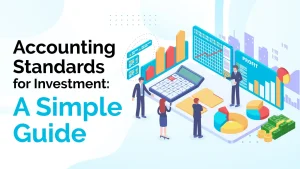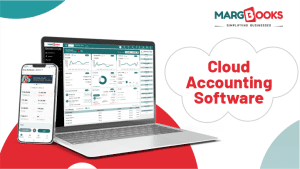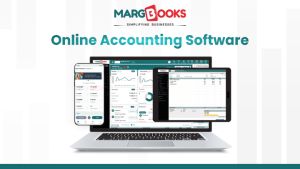Setting out on the path towards final accounts offers an incredible glimpse into a company’s intricate financial story. Let’s examine key components that contribute to this tale while demystifying final account preparation complexities.
Understanding Final Accounts:
Final accounts are like a detailed report card for a company, showing everyone interested how much money the company made, what it owns, and how it manages its cash. These accounts include three main parts: an income statement, a balance sheet, and a cash flow statement. Together, they paint a full picture of the company’s money situation, helping people like investors and managers make smart choices.
Financial statement preparation:
To create a complete financial picture, you need to carefully put together income, balance sheet, and cash flow details. It’s like solving a puzzle where every piece matters. This method ensures that everyone can see clearly and accurately how the company is doing financially. It helps build trust with everyone involved and makes it easier to plan for the future.
Closing Entries in Accounting:
1. Strategies and Approaches:
Closing entries play an invaluable role as post-party cleanup, resetting temporary accounts like revenue and expenses to zero for tracking financial transactions in the upcoming accounting period as well as safeguarding integrity of financial records.
2. Closing Stock Valuation:
Closing stock valuation, also referred to as inventory evaluation, is an integral component of physical goods businesses that deal in physical products and is an indispensable step. This procedure involves conducting an in-depth evaluation of those yet-unsold goods which could significantly change reported financial figures in an adverse way.
3. Trial Balance Adjustments:
Adjustments complete a company’s intricate financial puzzle by correcting discrepancies and errors to guarantee maximum accuracy when creating financial statements. Common forms of adjustments include accruals, prepayments and provisions; each playing a significant part in providing a more honest picture of its financial performance.
4. Closing Checklist of Financial Operations:
Financial closing checklists serve as a standardized to-do list that guides accountants through final accounts preparation with meticulous care and accuracy. Tasks included reconciling accounts, reviewing financial statements and assuring strict adherence with accounting standards are included on these comprehensive lists.
5. Selecting Vertical and Horizontal Final Accounts Format:
Deciding between vertical and horizontal formats when writing financial reports can be like choosing between different approaches for presentation: the vertical format lists items according to specific categories while providing more of an in-depth breakdown, while in contrast horizontal layout lays them all out side-by-side giving an overarching picture of financial activity.
Also read – Exploring Basics of Accounting Terminology
Final Accounts Format:
| Income | Amount ($) |
|---|---|
| Sales Revenue | XX,XXX |
| Interest Income | XX,XXX |
| Total Income | XX,XXX |
| Assets | Amount ($) |
|---|---|
| Cash and Cash Equivalents | XX,XXX |
| Accounts Receivable | XX,XXX |
| Total Assets | XX,XXX |
| Liabilities | Amount ($) |
|---|---|
| Accounts Payable | XX,XXX |
| Loans Payable | XX,XXX |
| Total Liabilities | XX,XXX |
XX,XXX
Objectives of Preparing Final Accounts
The objectives of preparing final accounts, also known as financial statements, are multifaceted and crucial for businesses and stakeholders alike. Here are some key objectives:
- Performance Evaluation: Final accounts provide a summary of a company’s financial performance over a specific period. They help stakeholders, including investors, creditors, and management, assess how well the company has performed in terms of profitability and efficiency.
- Decision Making: Final accounts aid in decision-making processes by providing valuable financial information. Investors use financial statements to decide whether to buy, hold, or sell shares of a company. Creditors use them to evaluate creditworthiness and determine lending terms. Management relies on financial statements to make strategic decisions about resource allocation, expansion, or cost-cutting measures.
- Accountability and Transparency: Final accounts enhance accountability and transparency within an organization. By disclosing financial information, companies demonstrate their commitment to openness and honesty with stakeholders. This transparency fosters trust and confidence among investors, creditors, and the public.
- Compliance with Regulatory Requirements: Companies are required by law to prepare and present financial statements in accordance with applicable accounting standards and regulatory guidelines. Final accounts ensure compliance with legal and regulatory requirements, preventing potential legal issues and penalties.
- Assessment of Financial Health: Final accounts provide insights into the financial health and stability of a company. Key financial ratios derived from financial statements, such as liquidity ratios, profitability ratios, and solvency ratios, help stakeholders evaluate the company’s financial position and performance relative to industry benchmarks.
- Facilitation of External Reporting: Final accounts serve as the basis for external reporting to regulatory authorities, such as tax authorities and securities commissions. Accurate and reliable financial statements facilitate compliance with reporting requirements and regulatory filings.
- Historical Record: Final accounts serve as a historical record of a company’s financial activities and transactions. They provide a comprehensive overview of past performance, serving as a reference point for future analysis and planning.
- Communication Tool: Final accounts serve as a communication tool between the company and its stakeholders. They convey important financial information in a standardized format, enabling effective communication and understanding among various parties involved.
What Is Final Accounts (FATs)
Final accounts, also known as Financial Assessment Templates, play a crucial role in presenting stakeholders with a comprehensive overview of a company’s financial standing. These documents consist of two main components: an income statement and a balance sheet. Together, they provide stakeholders with a detailed and accurate portrayal of the company’s financial performance and position. By offering insights into revenue, expenses, assets, liabilities, and equity, final accounts serve as reliable indicators of the company’s overall health and financial stability. They help stakeholders make informed decisions by providing a clear picture of the company’s profitability, liquidity, and solvency. In essence, final accounts serve as essential tools for assessing the financial well-being of a company and are instrumental in facilitating transparency and accountability in financial reporting.
Final Accounts With Adjustments:
Final accounts with adjustments are like adding extra details to a story, making it richer and more complete. Imagine if a company’s financial story was like a book with missing pages. Final accounts with adjustments fill in those missing pages by accounting for things that happen in between the lines of regular transactions. For example, they help recognize revenues or expenses that have occurred but haven’t been recorded yet. By doing this, final accounts with adjustments paint a clearer picture of how well the company’s finances have been doing during a particular period. They ensure that nothing important gets left out, making the financial story more comprehensive and reliable.
Trade Expenses in Final Accounts:
Trade expenses, simply put, are the everyday costs that come with keeping a business up and running smoothly. These include things like paying employee salaries, covering rent for office space, and footing the bill for utilities like electricity and water. When it’s time to crunch the numbers for tax season or to assess the financial health of the business, one crucial step is to subtract these trade expenses from the revenues earned. This subtraction reveals important insights into how efficiently the business is operating and how effectively it’s managing its costs. By understanding and analyzing trade expenses, businesses can make informed decisions to streamline operations and maximize profitability.
Navigating Final Accounts Problems:
Navigating final accounts can be quite challenging, as it involves various complexities that require careful attention to detail and strategic planning. From discrepancies in the trial balance to valuation issues, there are numerous hurdles that accountants may encounter during this process. Ensuring the accuracy and reliability of financial reporting is paramount, as even minor errors can have significant implications. Therefore, it is essential to approach final accounts with a thorough understanding of accounting principles and a meticulous eye for detail. By addressing trial balance discrepancies promptly and employing appropriate valuation methods, accountants can maintain the integrity of financial reporting processes and provide stakeholders with reliable information for decision-making purposes.
Financial Reporting Standards:
Navigating final accounts necessitates adherence to well-defined financial reporting standards established by international or regional accounting bodies. These regulations serve as a framework ensuring consistency across companies and industries, thereby facilitating the preparation of accurate yet comparable financial statements for final accounts submission.
In simple terms, when a company prepares its final accounts, it must follow certain rules or standards that have been set by organizations responsible for overseeing accounting practices. These standards ensure that the financial information presented in the company’s statements is consistent and can be easily compared with those of other companies. This consistency is crucial for investors, regulators, and other stakeholders who rely on financial statements to make decisions. So, financial reporting standards essentially provide a common language for businesses to communicate their financial performance accurately and transparently.
Importance of Accrual Accounting:
Accrual accounting principles are absolutely essential when it comes to crafting final accounts. Unlike cash accounting, which only logs transactions at the moment they occur, accrual accounting acknowledges economic events right when they unfold. This method offers a far more precise depiction of a company’s financial status, capturing the true essence of its monetary affairs. By recognizing revenues when earned and expenses when incurred, accrual accounting ensures that financial statements reflect the actual financial condition of a business, enabling stakeholders to make well-informed decisions based on accurate and reliable information. This approach provides a comprehensive view of a company’s performance over a given period, taking into account all revenues earned and expenses incurred, regardless of when cash actually changes hands. In essence, accrual accounting paints a clearer picture of a company’s financial health by aligning income and expenses with the time period in which they occur, thereby offering a more realistic representation of its financial position.
Depreciation and Asset Valuation:
Depreciation is a crucial aspect of final accounts as it reflects the gradual reduction in asset values over time. This reduction is essential to accurately represent the true value of assets on the balance sheet. The method selected for asset valuation, whether it’s the straightforward straight-line method or the more complex declining balance method, significantly impacts the reported profit and the values presented on the balance sheet. Therefore, understanding the intricacies of depreciation and asset valuation methods is imperative for ensuring financial statements accurately portray the financial health of an organization.
Tax Implications and Provisions:
Consideration of tax implications in final accounts is crucial to ensure a comprehensive depiction of a company’s financial standing. By accounting for the tax consequences of transactions and operations, businesses can present a more accurate picture of their profitability and financial health. Moreover, provisions for potential future expenses, such as legal or warranty claims, add another layer of accuracy to financial statements by acknowledging impending obligations and potential liabilities. This meticulous approach not only enhances transparency but also facilitates better decision-making for stakeholders.
Cash Flow Statement Insights:
Cash flow statements offer invaluable insights into the financial health of an organization by tracking the inflow and outflow of cash. While income statements and balance sheets are crucial, they may not provide a complete picture of a company’s financial position. In contrast, cash flow statements offer a granular view of how cash moves within the organization, offering stakeholders a clearer understanding of its liquidity and its capacity to fulfill short-term financial obligations. This document delineates not just the sources of revenue but also the destinations of cash, highlighting areas of strength and potential challenges. In essence, cash flow statements serve as a financial GPS, guiding stakeholders through the intricate terrain of an organization’s cash management, providing clarity, and facilitating informed decision-making.
External Audit and Assurance Services:
External audit and assurance services are really important for companies. When companies get external auditors to check their financial statements, it’s like getting an unbiased opinion about how accurate and trustworthy those statements are. This helps to make sure the company is following all the right rules and standards for accounting. By doing these audits, companies show they’re open and honest about their financial health. Also, it gives confidence to customers, investors, lenders, and regulators that the company’s financial information is reliable. This trust is super important for building good relationships with everyone involved with the company.
Managerial Discussion and Analysis (MD&A):
The Managerial Discussion and Analysis (MD&A) part is really important in final accounts. It’s like a storytime where company bosses explain what’s going on behind the numbers. They talk about their smart decisions and how they affect the company’s money stuff. People who care about the company, like investors or employees, read this to understand what’s really happening financially. It helps them see the big picture and why things are going the way they are.
Continuous Improvement in Financial Reporting:
It’s super important for companies to keep up with rules and standards about how they report their finances. They need to always try to make their reporting better. That means they should always be learning about new rules, using the best ways to report, and using new technology to help them do it. By doing these things, companies can make sure their financial reports are accurate, clear, and trustworthy. They need to keep working on making their reporting better all the time, so people like investors and regulators can trust them. It’s like always trying to make your work better and better, so everyone knows you’re doing a great job!
Conclusions:
Preparing final accounts requires more than just number-crunching; it involves adhering to established standards, applying accrual accounting principles accurately, understanding tax implications accurately and maintaining transparency through audits and management discussions. A commitment to continuous improvement ensures that final accounts not only satisfy current reporting requirements but remain robust and dependable in an ever-evolving financial landscape.
Also Read:
- A Guide to Balance Sheet FormatsAre you a business owner and want to know ‘what is the balance sheet formats?’ if yes, then you have jumped on the right page. Continue reading about the balance sheet in detailed form- A balance sheet is a report… Read more: A Guide to Balance Sheet Formats
- Accounting Standards for Investment: A Simple GuideIn the intricate world of finance, understanding accounting standards for investment is paramount for individuals and businesses alike. Whether you’re an investor looking to navigate the complexities of financial reporting or a company aiming to comply with regulatory requirements, having… Read more: Accounting Standards for Investment: A Simple Guide
- Best Cloud Based Accounting Software in IndiaTraditional ways of managing finances are slowly being replaced by modern cloud based solutions. These new methods bring ease, accessibility, and effectiveness to handling your money matters. In this article, we’ll look at why cloud based accounting software is a… Read more: Best Cloud Based Accounting Software in India
- Best Online Accounting Software in IndiaCertainly! Managing money well is really important for businesses of all sizes. Thanks to online accounting software, the old, tedious task of manually keeping track of finances is a thing of the past. Now, businesses can access advanced tools and… Read more: Best Online Accounting Software in India
Frequently Asked Questions
What are final accounts?
Final accounts are financial statements summarizing a company’s performance, including income statement and balance sheet. They offer insights into profitability and financial health.
Why are final accounts important?
Final accounts provide crucial information for stakeholders like investors, creditors, and management to assess a company’s financial position and make informed decisions.
What is included in the income statement?
The income statement records revenues and expenses over a specific period, showing the company’s profitability. It includes sales, expenses, and net profit or loss.
How do you prepare a balance sheet?
A balance sheet lists a company’s assets, liabilities, and equity at a specific point in time. Assets equal liabilities plus equity, reflecting the company’s financial position.
What is the purpose of the trial balance?
The trial balance ensures that debits equal credits before preparing final accounts. It’s a preliminary step to identify errors and ensure accuracy in financial reporting.
How do you calculate gross profit?
Gross profit is calculated by subtracting the cost of goods sold (COGS) from total revenue. It represents the profit generated from core business activities.
What is depreciation, and why is it important?
Depreciation is the gradual decrease in the value of assets over time. It’s crucial because it allocates the cost of assets over their useful life, reflecting their true economic value.
What are the components of shareholders’ equity?
Shareholders’ equity comprises share capital, retained earnings, and reserves. It represents the owners’ stake in the company after deducting liabilities.
How are final accounts used for decision-making?
Final accounts provide valuable insights for decision-making, such as assessing profitability, liquidity, solvency, and overall financial performance.
What are some common errors in final accounts preparation?
Common errors include incorrect classification of expenses, omission of transactions, calculation mistakes, and failure to account for adjustments like depreciation or accruals.








